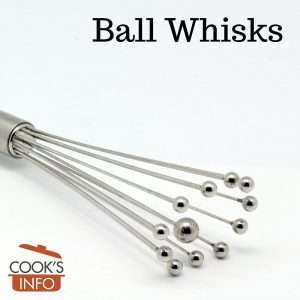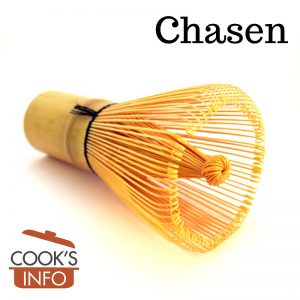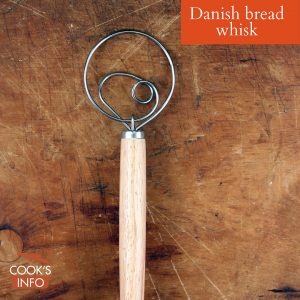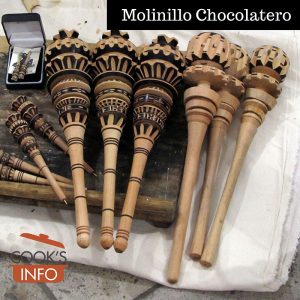
Whisks. © Cooksinfo / 2019
A whisk is a kitchen tool using for blending, whipping, incorporating air and eliminating lumps in food.
Most whisks are hand-held and hand-powered, though some mechanical and electronic versions are available.
Once seen in North America as something just for people who also have expensive copper pots, whisks are now very affordable and available even in discount stores. Many people have a collection of them in different shapes and sizes.
Whisks can be made of metal, nylon plastic, wood or bamboo. Wooden ones break easily. Nylon whisks are quite flimsy and don’t have a lot of whisking power. Silicone-coated wire whisks are better. Better quality metal whisks have the handle sealed at both ends.
Not all types of whisks are dishwasher safe. Check before you buy if this is important to you.
It’s best not to risk using metal ones in non-stick pots or pans, as you may damage the non-stick surface of your pot. This is when nylon whisks, despite not having a lot of oomph, are useful.
The nomenclature of whisks can be confusing, and often English will use the same term for different ones. French terminology has the same problem. Note that in English at least two very different whisks are referred to as a “French Whisk”, whereas as in French, as you’d expect, there is no such thing as a whisk called a “French Whisk.”
Substitutes
For blending, a spoon or a fork will do. For whipping, an electric hand mixer or a blender.
History Notes
The earliest whisks were bunches of twigs tied together. Whisks were mentioned as early as 1765 by Susannah Carter.
Whisks only really became known in North America through Julia Child.
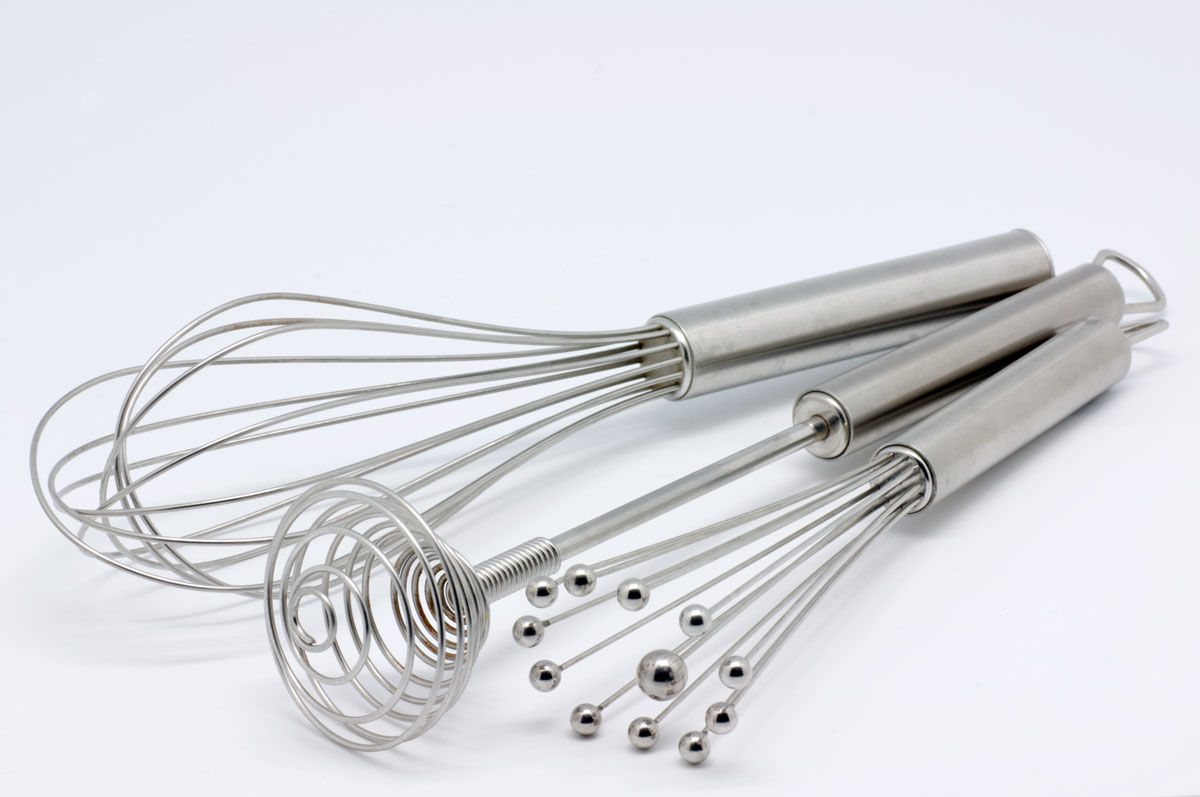
Various whisks: (L-R) Balloon, coil, and ball. Marie-Lan Nguyen / Wikimedia / 2012 / CC BY-SA 2.5
Literature & Lore
“A White Syllabub: Take two porringers of cream, and one of white wine, grate in the skin of a lemon, take the whites of three eggs, sweeten to your taste, then whip it with a whisk; take off the froth as it rises, pour it into your syllabub-glasses or pots, and they are fit for use.” — Susannah Carter. The Frugal Housewife: Chap. XIV. Of Syllabubs, Creams, and Flummery. London: Francis Newbery. 1765.
Language Notes
The English word “whisk” came from the Norse word “viska” which meant to plait or braid.


